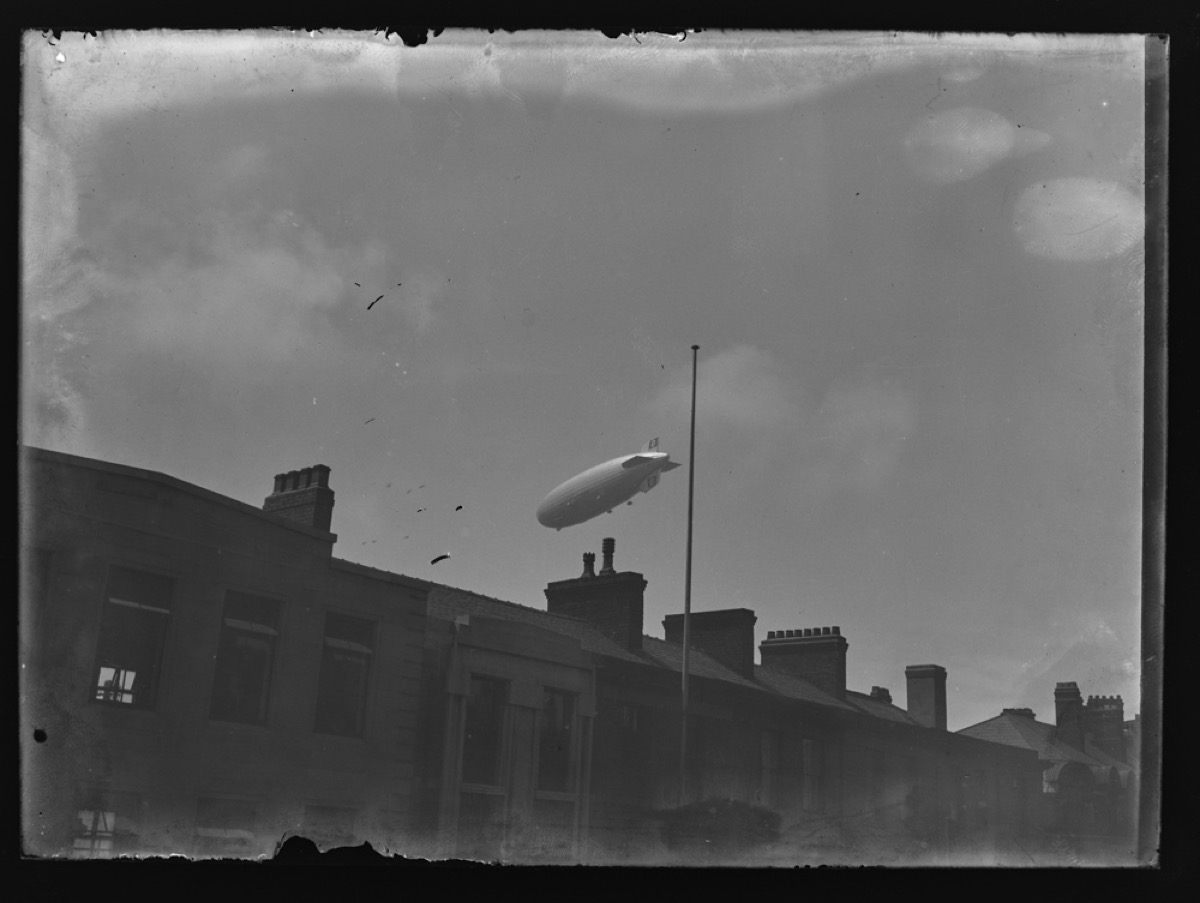
See more from the Barrow Blitz Exhibition
Hindenburg
Martin Bates
Seeing the novel and impressive sight of the German Zeppelin passenger airship Hindenburg caused excitement in Barrow as she flew low and slow overhead. It was on its way from Friedrickshafen (southern Germany) to New Jersey in America.
Most people knew that the swastika symbols on the tail of the airship were symbols of Hitler’s Nazi party, though probably were not fully aware of the threat behind its fly-over. (1) Informed observers, however, believed the ‘visit’ was linked to the increased naval shipbuilding orders for the town, which were due to start the following year.
The sensitivity of Barrow being spied on from the air is illustrated by the fact that Sir Jonah Walker-Smith, then MP for Barrow-in-Furness, asked questions in the House of Commons as to whether Barrow is or should be scheduled as a prohibited area for foreign aircraft. (2).
The Hindenburg flew over Barrow again on a return journey in July 1936 when she was carrying 52 passengers.
A later report in a newspaper describes how on another flight over England, it went over three airfields and Portsmouth Dockyard, at 400ft, specifically in defiance of the British government’s 6000ft ‘no fly order’. (3).
In all, the Hindenburg completed 10 transatlantic trips and six trips to Brazil, in 1936, her first year of operation. Disaster struck on the first trip to America the following year, when she caught fire and crashed to the ground during the “landing” at New Jersey with the loss of 36 of the 97 people on board. This tragedy – caught on film (4) – spelled the end for airships. Interestingly, she had been originally designed to have helium as the ‘lift gas’ but America had refused to lift their export ban and so the German’s design was modified for the more hazardous, flammable hydrogen.
Additional Information:
- Barrow-in- Furness Remembered. Bill Myers 2011 The History Press.
- The Evening News (London), 10 June 1936
- Daily Herald, 6 July 1936
- https://www.youtube.com/watch?v=fURATK5Yt30














